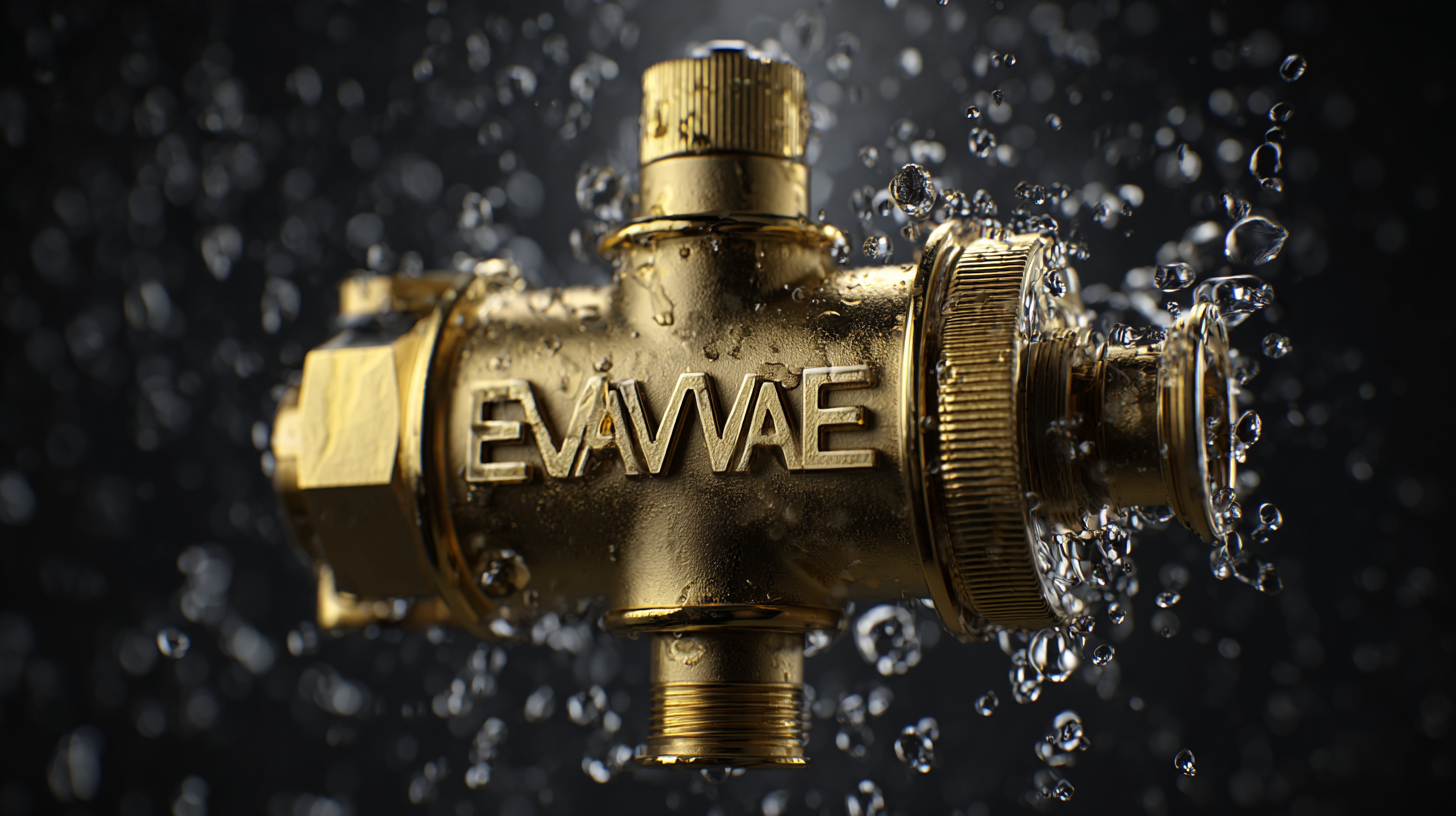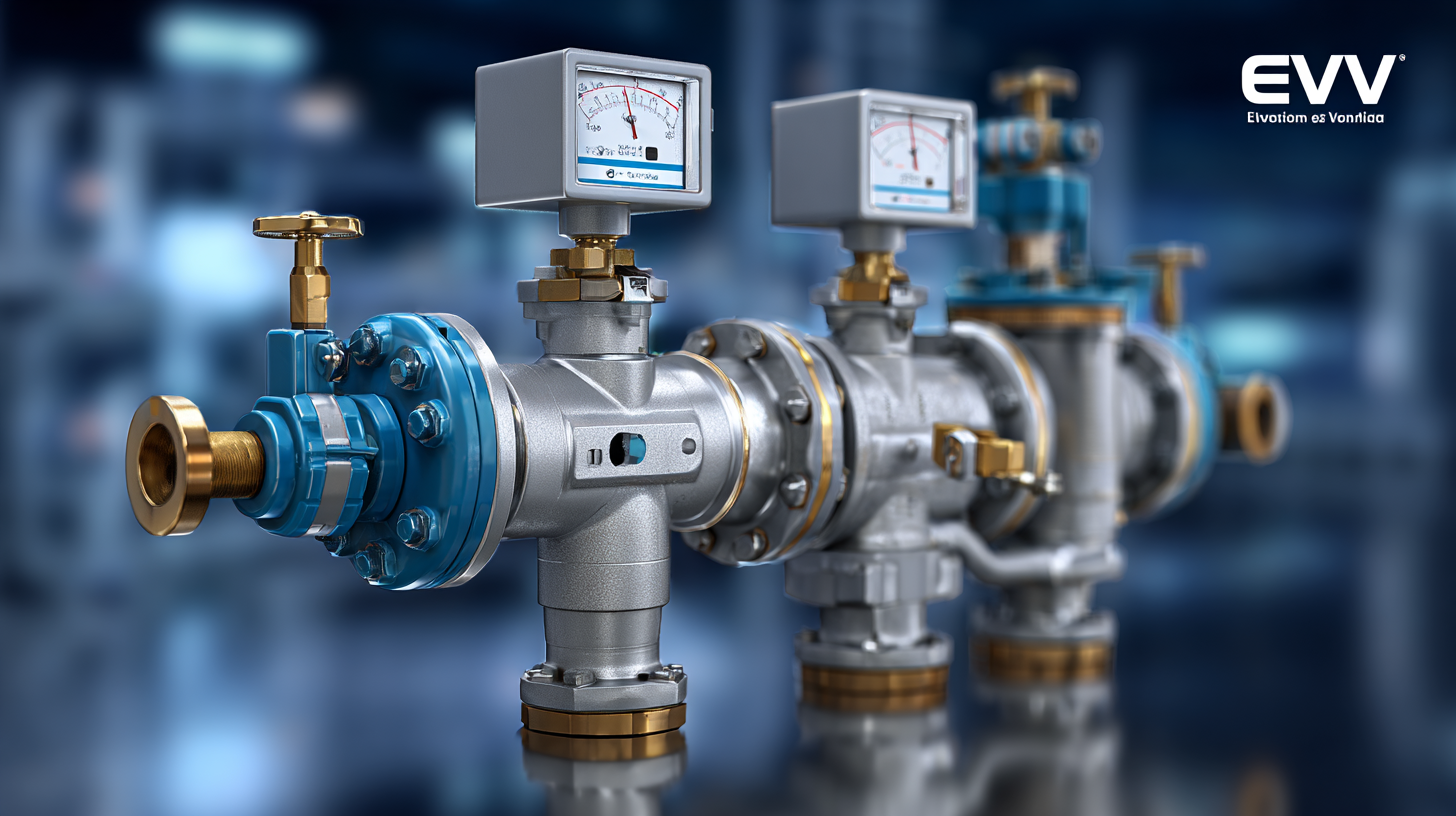As the demand for efficient and precise temperature control in water systems continues to rise, the Electronic Mixing Valve has emerged as a pivotal technology shaping industry trends leading into 2025. Recent reports from industry leaders such as MarketsandMarkets project the global electronic mixing valve market to grow at a CAGR of over 8% by 2025, driven by increasing consumer awareness of energy efficiency and the need for enhanced safety measures in plumbing systems.

With the potential to significantly reduce energy consumption and optimize water usage, finding a supplier that meets these innovative standards is crucial for industry players. This blog will explore essential criteria for identifying high-quality suppliers and provide a practical checklist to guide stakeholders in their selection process, ensuring they stay ahead in a rapidly evolving market landscape.
In modern industrial applications, electronic mixing valves play a crucial role in enhancing efficiency and precision. These advanced devices allow for the accurate regulation of fluid temperatures and flow rates, essential for processes such as heating, cooling, and industrial mixing. By integrating sophisticated sensors and control algorithms, electronic mixing valves can respond in real-time to demand fluctuations, ensuring optimal performance and energy conservation.
The growing trend towards automation in industries signifies a shift towards more intelligent systems, where electronic mixing valves are at the forefront. Their ability to integrate with smart building management systems and IoT technology represents a significant advantage. By providing detailed data analytics on system performance, these valves enable operators to make informed decisions, ultimately leading to reduced operational costs and improved safety standards. As industries continuously seek to innovate and streamline their operations, the importance of electronic mixing valves is set to expand significantly, adapting to ever-evolving market needs and environmental considerations.
The manufacturing sector is on the brink of a transformative shift, with projections indicating that the market for smart electronic mixing valves will grow significantly by 2025. According to a recent report by Market Research Future, the global smart valve market is expected to reach $4.5 billion by 2025, growing at a compound annual growth rate (CAGR) of 12%. This acceleration in growth can be attributed to the increasing demand for automation and improved efficiency in manufacturing processes. Smart valves equipped with IoT technology offer manufacturers real-time monitoring and control, leading to substantial energy savings and reduced operational costs.

Moreover, the integration of artificial intelligence into smart valve systems enhances predictive maintenance capabilities, resulting in decreased downtime and extending equipment lifespan. A study by Deloitte highlights that companies implementing smart technologies in their manufacturing facilities could see productivity improvements of up to 20%. As the industry evolves, investing in electronic mixing valves not only positions companies to leverage these advancements but also to remain competitive in a rapidly changing market.
Tip: When considering the implementation of smart valves, focus on compatible technologies that can integrate seamlessly with existing systems to maximize the return on investment. Additionally, ensure that your team is trained to utilize the advanced features of smart valves to fully capitalize on their potential benefits.
The evolution of electronic mixing valves is set to reshape industry standards by 2025, with key technological innovations driving enhanced performance and efficiency. According to a recent report by MarketsandMarkets, the electronic mixing valve market is projected to grow from $1.85 billion in 2020 to $3.16 billion by 2025, representing a compound annual growth rate (CAGR) of 11.2%. This growth is largely attributed to advancements in smart technologies and the integration of Internet of Things (IoT) capabilities, enabling real-time monitoring and precise temperature control.
One of the most significant innovations is the development of advanced control algorithms that allow electronic mixing valves to automatically adjust to changing conditions and user preferences. This not only improves energy efficiency but also enhances user comfort and safety. A study by ResearchAndMarkets indicated that the integration of AI in valve technology can reduce energy consumption by up to 30%, substantially cutting operational costs for industries relying on heating and cooling systems. Furthermore, the implementation of predictive maintenance technologies ensures reliability, minimizing downtime and maintenance costs, which is crucial for industries that depend on continuous operation.
| Feature | Description | Impact on Performance | Expected Adoption Rate by 2025 |
|---|---|---|---|
| Smart Temperature Control | Automated adjustment of temperature based on real-time data. | Increases accuracy and reduces energy consumption. | 75% |
| IoT Integration | Connectivity with other smart devices for centralized control. | Enhances user experience and operational efficiency. | 80% |
| Energy Monitoring | Feature to track and analyze energy usage patterns. | Improves sustainability and cost savings. | 70% |
| User-Friendly Interface | Intuitive touchscreen controls for easy operation. | Reduces training time and improves accessibility. | 85% |
| Advanced Safety Features | Alerts and automatic shut-off mechanisms for safety. | Minimizes risks and enhances user confidence. | 90% |
The advent of digitalization is profoundly transforming the functionality of electronic mixing valves, setting new industry standards. According to a recent market report by MarketsandMarkets, the global smart mixing valve market is projected to grow from $1.2 billion in 2023 to approximately $2.5 billion by 2025, reflecting a compound annual growth rate (CAGR) of 15.3%. This growth is driven by the increasing demand for energy-efficient systems and the integration of IoT technologies into industrial processes.
Digitalization enables real-time monitoring and control of mixing valves, enhancing performance and reliability. For instance, the use of advanced sensors and AI algorithms allows for precise temperature and flow adjustments, resulting in improved operational efficiency. A study published by Frost & Sullivan indicated that industries utilizing digitalized mixing valves could reduce energy consumption by up to 25%, significantly lowering operational costs while adhering to stricter environmental regulations. The ongoing shift towards automation and smart infrastructure is shaping a future where electronic mixing valves not only meet but exceed contemporary industry standards.

In today's rapidly evolving industrial landscape, energy efficiency and sustainability in mixing valve design are paramount. The projected growth of the Saudi Arabia industrial valves market, with a significant valuation increase expected over the next five years, underscores the rising demand for innovative solutions that prioritize eco-friendliness. As industries seek to optimize their operations, the integration of advanced electronic mixing valves has emerged as a transformative trend, allowing for precise temperature and flow control while minimizing energy consumption.
Moreover, the growing prominence of thermostatic mixing valves in North America highlights the importance of safety and efficiency in HVAC systems. These valves are designed not only to enhance operational effectiveness but also to reduce waste and support sustainability goals. With the global HVAC equipment market expected to expand substantially, investing in smarter mixing valve technologies will be crucial for companies aiming to stay competitive while adhering to environmental standards. As we approach 2025, the commitment to energy efficiency through innovative valve design will undoubtedly set the stage for a more sustainable industrial future.
